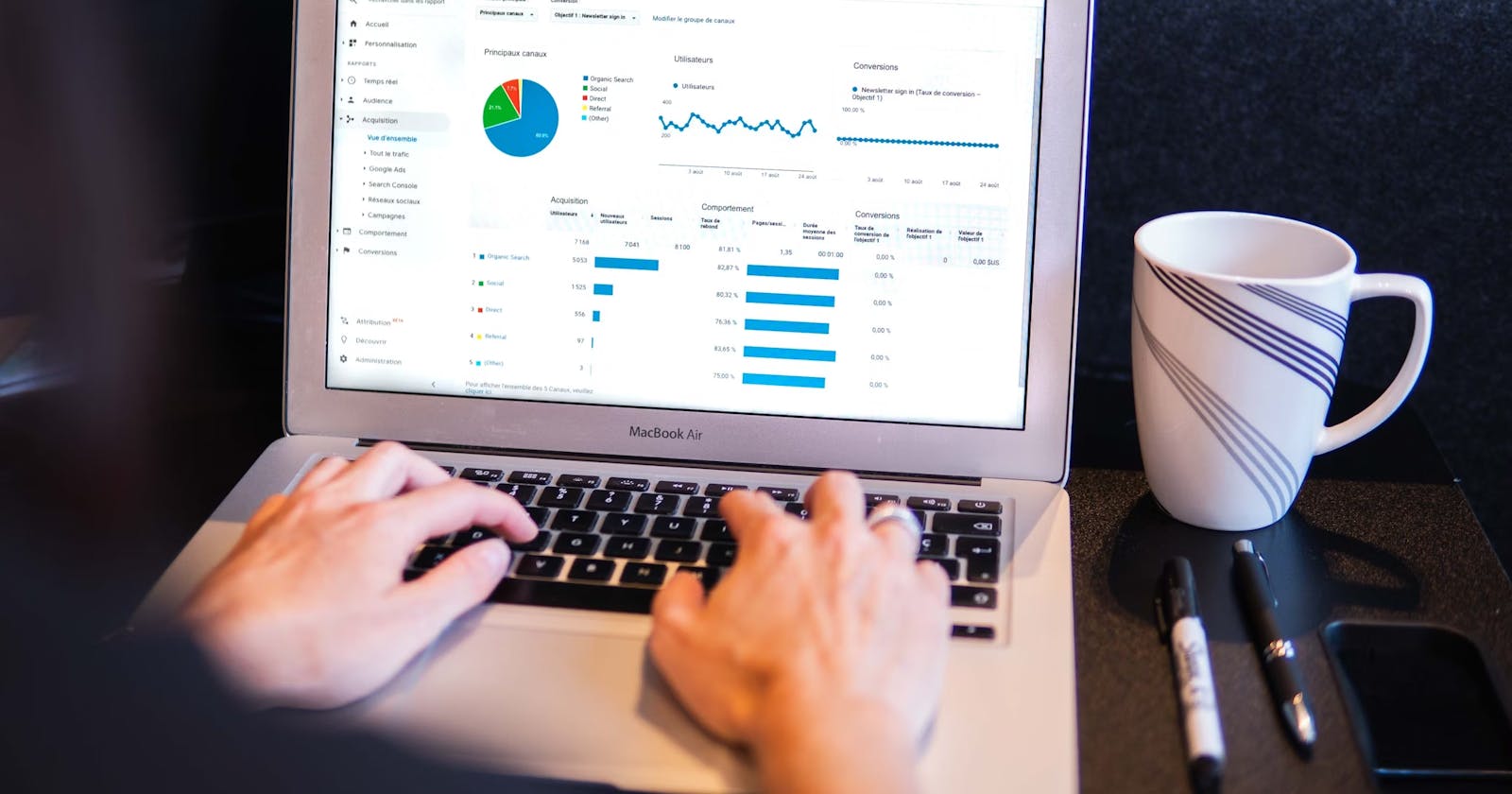From Data to Insights - Introduction to Data
This blog is part 1 of the multi-part series on data analytics & business intelligence. This part covers a brief introduction to the world of data.
Introduction
For the past 10 years, I've been dabbling in this vast realm of data analytics. it is safe to say that a lot has changed in the way we produce and consume data. In the expansive landscape of data analytics, the process begins with the collection and processing of raw data from various vast, disparate datasets. The collected raw data is then subjected to various transformations to uncover meaningful patterns and trends through various techniques. Data, once transformed into actionable intelligence, serves as the cornerstone of informed decision-making. In today's data-driven era, the importance of robust analytics cannot be overstated.
Organizations, irrespective of industry, are increasingly reliant on data insights to navigate the complexities of the business landscape.
The ability to harness data effectively is pivotal in addressing challenges, mitigating risks, and uncovering new avenues for growth. For example, a retail company can analyze their sales data to identify the best and worst-selling products. This information can then be used to adjust inventory levels, optimize pricing strategies, and allocate business resources effectively. We can also analyze the data from customer interactions and have a better understanding which can be used to tailor marketing campaigns, improve customer service, and develop new products. By making data-based decisions, businesses can reduce errors and become empowered to make properly informed decisions, leading to better outcomes.
What is Data?
Now before we go exploring this vast field of data analytics, we first need to acquaint ourselves with the basic fundamental block which binds everything together: Data
In this digital age, data has emerged as the lifeblood of the modern society. Data not only shapes the decision-making processes but also helps alter the landscape of how we interact with the world.

Simply put, data refers to the raw, unfiltered streams of information. In an era where our lives are increasingly intertwined with technology, data is being generated all around us at an exponential pace.
Consider the example of social media. Every like, click, and share on different platforms like Facebook, Instagram, or X (Twitter) generates data. These platforms capture and analyze user interactions, and use the information to create detailed personal profiles that encapsulate not only the user preferences but also the sentiments and social connections. This information further assists a variety of other industries such as advertisers, researchers, and businesses seeking to understand and target specific demographics.
Similarly, the advent of the Internet of Things (IoT) has also caused a similar explosion in data generation. From smart thermostats that monitor and regulate home temperatures to wearable fitness trackers that record every heartbeat and step, our physical surroundings have become rich sources of data. These interconnected devices, embedded with sensors and communication capabilities, seamlessly contribute to the ever-expanding digital data sources. Not just in healthcare but agriculture too, the sensors in the field collect data on soil moisture, temperature, and crop health, empowering farmers to make informed decisions about irrigation and crop management.
Every transaction conducted online, every interaction with customer service, and every click on an e-commerce platform leaves a digital footprint. In the financial sector, this knowledge of data & analytics helps with risk assessment and fraud detection. Banks meticulously scrutinize transaction data to identify anomalies, ensuring the security of financial systems.
Healthcare, too, has undergone a transformative metamorphosis with the integration of data. Electronic health records consolidate patient information, offering a comprehensive view of medical history and treatment regimens.
Data has become an omnipresent force, shaping our digital experiences.
In today's digital age, understanding the nuances of data generation, collection, and utilization is not just a matter of technological literacy; it is a key to innovation, efficiency, and a deeper comprehension of the intricacies that define our rapidly evolving society.
Types of Data
At its most fundamental level, data is broadly classified into two primary categories: structured and unstructured.
Structured data is highly organized and conforms to an often tabular, predefined schema. This structure makes it easily searchable and analyzable. Examples include databases, spreadsheets, and CSV files.
Unstructured data, as the name suggests, lacks a predefined structure and encompasses a wide variety of formats such as text, images, audio, and video files. This category has its own set of challenges due to the inherent complexity of data and the lack of a predefined structure.
Text/Textual data is a prominent subset of unstructured data and it dominates the digital landscape. It includes almost everything from, but not limited to, emails, social media posts, articles, documents and reports. Natural Language Processing (NLP) techniques are generally employed to extract meaningful insights from the data.
Another popular format is Image data, generated by cameras, satellites, and various imaging devices. The analysis of image data involves techniques such as computer vision. Processed image data helps enable applications ranging from facial recognition to medical image diagnosis.
Audio data, including voice recordings and sound files, is analyzed through techniques such as speech recognition and audio signal processing, which finds usage in applications such as voice assistants and automated transcription services.
Data is also categorized based on its temporal characteristics, such as Time-series data. This data type is prevalent in fields such as finance and IoT, where information is captured over successive time intervals, facilitating trend analysis and forecasting.
Geo-spatial data incorporates location-based information, aiding in applications like mapping, navigation, and urban planning.
Network data explores relationships and connections between entities, often visualized in graphs to uncover patterns and anomalies. It finds application in social network analysis and cybersecurity.
When it comes to data processing, the raw data is often presented in various formats, each requiring different techniques for extraction and transformation.
One of the most common formats I've seen and used is the CSV (Comma-Separated Values) file. It is a simple and widely used format where data is organized into rows and columns. Excel spreadsheets follow a similar structure but they are often more feature-rich. JSON (JavaScript Object Notation) and XML (eXtensible Markup Language) are formats that help represent hierarchical and nested data structures, frequently used in web development and APIs.
Database systems, ranging from relational databases like MySQL to NoSQL databases like MongoDB, store structured data efficiently, enabling quick retrieval and manipulation through queries.
In conclusion, there is a lot of diversity in both the types and the formats in which we can encounter raw data. Handling and processing the raw data requires a good understanding of the characteristics and nuances of each data type and its processing techniques.
Real-life example
Now let's walk through an example, to see how data is being generated & stored all around us in the context of a retail superstore.

At the forefront of this is the point-of-sale data ensemble, which is the transactional data. This data is structured in nature and neatly organized into databases. It helps form the building blocks of sales and inventory management systems.
Now if there are sales, there are bound to be customers. And with customers, there will be complementing customer data. This type of data takes on various forms, from basic demographic information to more detailed insights like purchasing history and loyalty program interactions. This type of data is also structured and generally stored in the database.
There is also some unstructured data in the form of customer reviews and feedback, often expressed through text, social media posts, or online surveys, providing valuable sentiment analysis opportunities.
Sales data, beyond transactional records, encompasses data on promotions, discounts, and sales trends. This data, often structured in spreadsheets, aids in strategic decision-making, allowing the retail management to optimize pricing strategies and promotional campaigns.
Time-series data, derived from sales over specific time intervals, helps in discovering patterns informing inventory planning, especially during peak shopping seasons or promotional events.
The retail environment also provides us with a ton of unstructured visual data. Video footage from surveillance cameras is one such example. Computer vision techniques can be applied to analyze this data, offering insights into product popularity, optimal store layouts, and identifying potential security threats.
Inventory data, both structured and unstructured, is a critical element of the retail store data scenario. Structured data can include inventory details, quantities on hand, and reorder points stored in databases. Unstructured inventory data may include product images, RFID (Radio-Frequency Identification) tags and barcodes.
Now let's take a step back and imagine that this retail store is part of a larger retail conglomerate. As is the case with every big corporation nowadays, this particular retail corp has a presence on social media. As we read earlier, social media and online platforms generate a wealth of data. Some examples of data collection and analysis include monitoring hashtags, mentions, and especially reviews on platforms like X, Facebook, and Yelp. This data, often in JSON or XML formats, is gathered through APIs and can be stored in cloud-based systems for scalable and accessible processing.
To effectively process and analyze this diverse array of data, a multi-tiered storage and processing approach is employed.
Structured data, such as transactional and customer information, is typically stored in relational databases like MySQL or Oracle for efficient querying and data retrieval.
Unstructured data, including visual and textual data, often finds a home in NoSQL databases like MongoDB or cloud-based storage solutions due to their flexibility and scalability.
Big data technologies, such as Apache Hadoop or Apache Spark, come into play when dealing with vast volumes of data, commonly known as Big data. These technologies enable parallel processing and distributed storage, allowing for the analysis of large datasets cost-effectively. Data warehouses, like Amazon Redshift or Google BigQuery, serve as central repositories for aggregated and processed data, facilitating business intelligence reporting and analytics.
Conclusion & Next Steps
So, we had a good start with an intro to Data Analytics, with a brief plunge into the vast ocean of data.
If you are a complete beginner in this field, I hope you now have an idea of what is data analytics and why is it important. Take a look around you to see different sources that generate data and try to visualize the data format and its possible usage. For example, at this moment I'm typing this blog. I'm in front of my keyboard. What sort of data is generated from my keyboard and how can I store it and most importantly, use it? Maybe my average typing speed over the past 30 days? Or the most commonly used words in the blogs I've written? A fun little exercise for you to get more familiar with the concept of data.
This is in no way a complete picture of what data is, how we handle it and ultimately harness it for our benefit. That will be coming up, so stay tuned.
If you have any queries, comments or feedback, please do let me know. I'd be more than happy to help you out.
Cheers!

